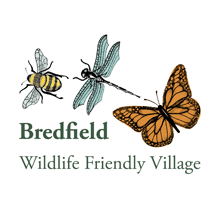Should we feed our garden birds all year round? It’s a question that is often asked. The best answers suggest that, though some times of the year might be more important than others, we shouldn’t be too concerned about when to feed the birds. Rather, we should be paying more attention to what, how and where we feed them. Let’s try to work our way through when, what, how and where it is best to feed birds in our garden.
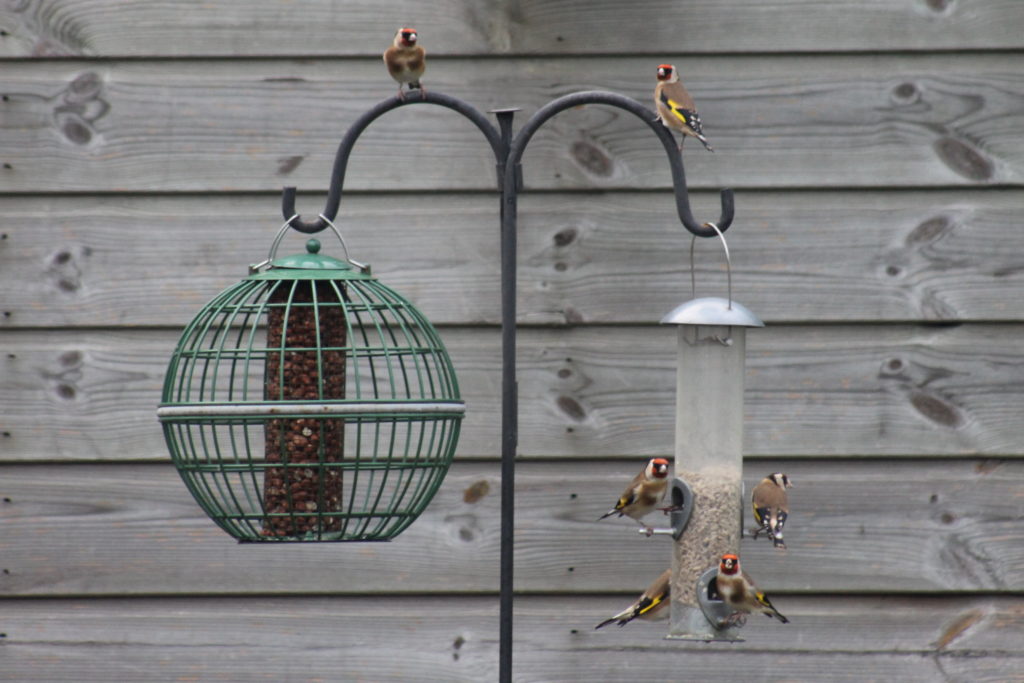
Busy time on the feeder
When to feed the birds?
The guidance that is usually given about when to feed garden birds is that you should try to feed them when there are ‘food shortages’. OK, but this is not so easy to interpret. Clearly mid-winter is a time when there will usually be food shortages for most birds, especially when there is snow on the ground. Birds require high-energy, high-fat foods during the cold winter weather, for they must maintain their fat reserves to survive the frosty nights. However, food shortages can occur at any time of year. Climate change has brought increased volatility in the weather, and this can also bring food shortages. In the summer months, birds will be molting, which means they may be less mobile and also need food to aid feather growth. Shortages can also occur because of an increase demand; for example, when there is a surge in the number young birds about. Hence, supplementary feeding can also be crucial in the spring (though, as we will see later, it is necessary to avoid supplying foods that are unsuitable for newly fledged birds). Remember that in rural areas like Bredfield, birds may be coming to your garden to feed because there is a shortage of food available in the surrounding fields. This may be a factor that is present the year round.
There is an expressed concern that by feeding birds we may unwittingly be creating a dependency on garden-feeding, to the cost of birds foraging and feeding in the ‘wild’. In fact, there is no discernable evidence that garden feeders create dependency. For example, research suggests that food gathered at feeders typically makes up less than 20% of the diet of Blue Tits in winter. Parent birds almost exclusively feed their chicks on food foraged in the wild.
So, it is not at all straightforward to judge when birds can simply be left to their own devices for feeding. There could be good reason to feed birds the year round. What may be more important is how and what we feed the birds.
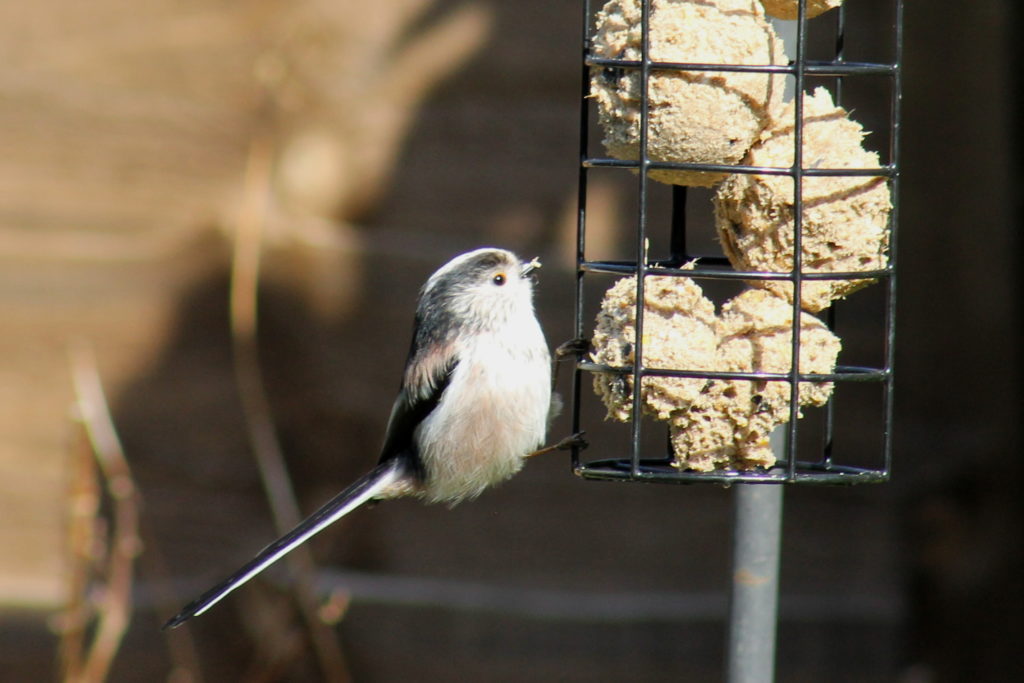
Long-tailed Tit
What to feed the birds?
Some foods are clearly more popular with birds and more nutritious than others. Certainly, sunflower seeds will be a big hit with Tits, Finches and Sparrows. Peanuts and suet balls – placed in mesh feeders – will also prove attractive. Remember though that not all birds are willing and able to eat by perching or hanging on feeders; though some will have a good go! Many birds – such as Dunnock, Robin, Blackbird and Song Thrush are, in the main, ground-feeders or will feed on a bird-table. Robins will be very attracted to mealworms. There is a lot of good advice about what is the most suitable food for birds, and the best course of action is to consult the websites of the RSPB and the Wildlife Trusts.
If you want to help rather than endanger birds, there are a few food stuffs you should avoid feeding to birds:
- Avoid hard foods that are difficult to digest and may choke birds. Examples include: dried pulses and rice; salted or dry roasted peanuts; and dry dog biscuits.
- Homemade fat balls can go rancid in hot weather and should then be avoided.
- Avoid glutinous foods, such as cooked porridge, which could harden around a bird’s beak.
- Birds need high levels of saturated fats to build body reserves to see them through the winter. Polyunsaturated margarines and vegetable oils are unsuitable for birds; whereas raw suet and lard are much better. Moreover, soft fats can get smeared on feathers, destroying their waterproofing and insulating qualities.
- Though peanuts can be good food – especially for Blue Tits and Great Tits – they could contain dangerously high levels of toxins, if not bought from a reputable source (see below).
- Avoid desiccated foods, such a desiccated coconut, as this may swell inside the bird and cause death.
- Bread, thrown onto the lawn, is not the best food. It is unlikely to provide the right nutrients and, when dry, could prove to be a choking hazard for small birds. Of course, if it’s Magpies and Gulls you are seeking to attract, it might be just the right thing!
The sale of bird food – seeds, nuts, suet, mealworms, etc – is a thriving industry nowadays and you shouldn’t face any problems with finding a source from where to buy food. If you require one recommendation, you could try Vine House Farm who donate a proportion of their profits to the Wildlife Trusts.
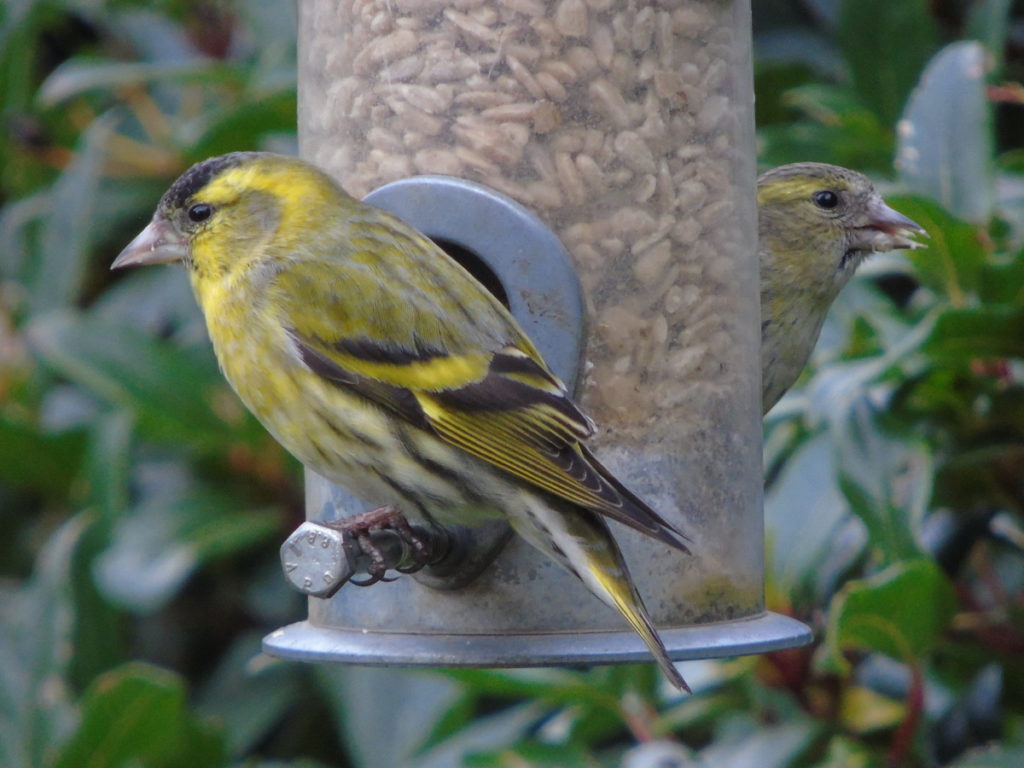
Siskins
How to feed the birds?
Perhaps the most important factor to consider in bird feeding is how we feed them. The crucial point is that it should be done hygienically. Bird feeders tend to attract lots of birds together in one space, at the same time; and often birds that normally wouldn’t congregate and feed together. If you look on the ground under your bird feeder, you might find Chaffinch, Robin, Wood Pigeon, Dunnock and even Pheasant all eating together. This can create an environment in which diseases can thrive and spread. Evidence of this is to be found in the spread of trichomonosis, which had a devastating effect on Greenfinch a few years back.
This doesn’t mean giving up on bird feeding, it just means doing three easy things to ensure that your bird feeding is hygienic:
- Clean your bird feeders regularly.
- Don’t allow uneaten food to accumulate in feeders and around the feeding area.
- Move your bird feeders around the garden a few times during the year.
If you do see evidence of diseased birds around your feeder, it may be wise to pause your feeding for a while.
There exists a vast range of types of bird feeders from which to choose. Some are (said to be) squirrel-proof; some come in a cage surround that keeps out larger birds and predators (and squirrels). Some are huge, ornate contraptions; some are simple but still effective. Which type you use is largely a matter of consumer choice and no advice on the best type of feeder is given here. It is probably more important to consider where your feeder will be placed.
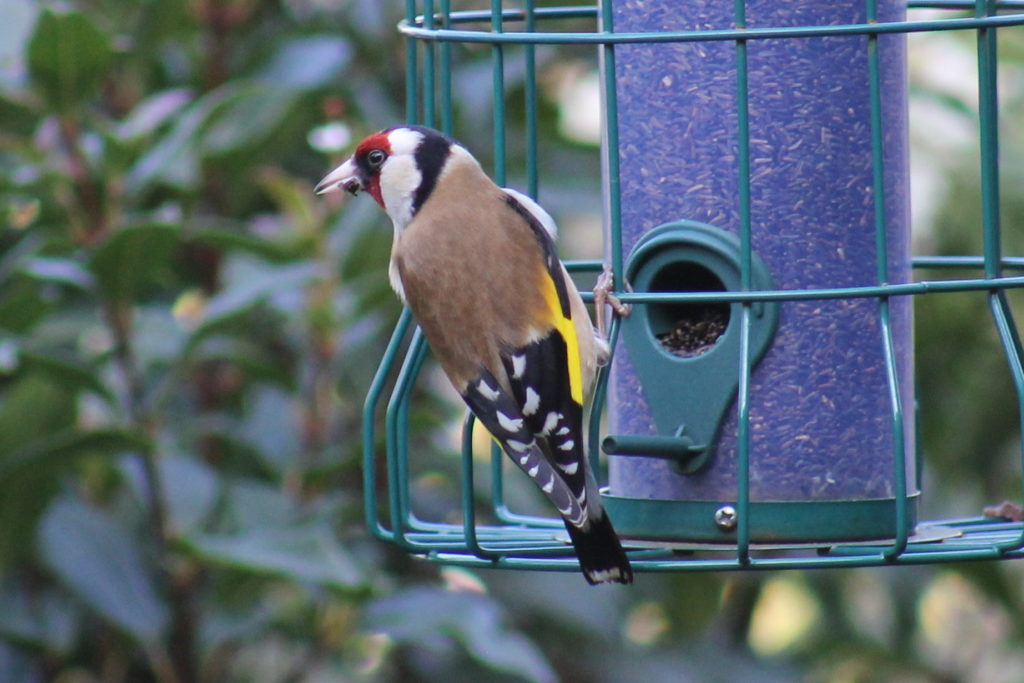
Goldfinch
Where to feed the birds?
An important consideration is the location of the bird feeder in your garden. The rule to follow is to try to find the right location relative to adjacent vegetation. On the one hand, it is good to locate your feeder next to a tree or hedge where birds can land and find shelter between feeding sorties; but, on the other hand, not placed next to low bushes beneath which a cat may lurk ready to spring on ground-feeding birds. Try to find a suitable spot.
Lastly, let’s consider the claim that feeding birds can create a natural imbalance; where the most dominant birds in the feeding hierarchy win out, at a cost to less-dominant species. Blue Tits may seem small, but they are more aggressive and hold a higher rank in the feeding stakes than, say, Willow Tit. It is said that the now-rare Willow Tit may suffer as result of establishing ‘artificial’ feeding. This a fair argument against feeding birds in some environments. It is probably not wise to erect bird feeders in pristine areas where rare birds (such as Willow Tit) live. However, like most gardens in the country, this won’t apply in Bredfield, where we are surrounded by a managed agricultural landscape. You will find that some birds seem to be more dominant than others at your feeder, but birds naturally adapt to this. Even birds such as Coal Tit, which come very low in the ‘pecking order’ find a way of sneaking-in to grab seeds from the feeder when other birds are away.
Gardens in Bredfield provide a sanctuary for many species of bird, which otherwise might not find sufficient food elsewhere at certain times of the year. We have the potential and the means to help all vulnerable birds.
